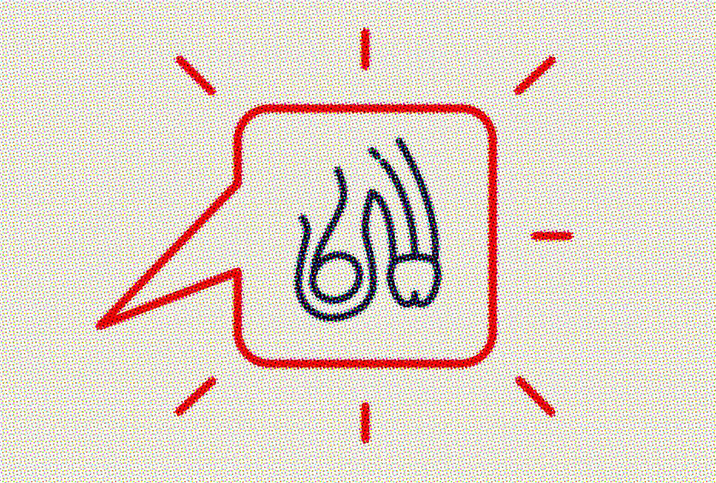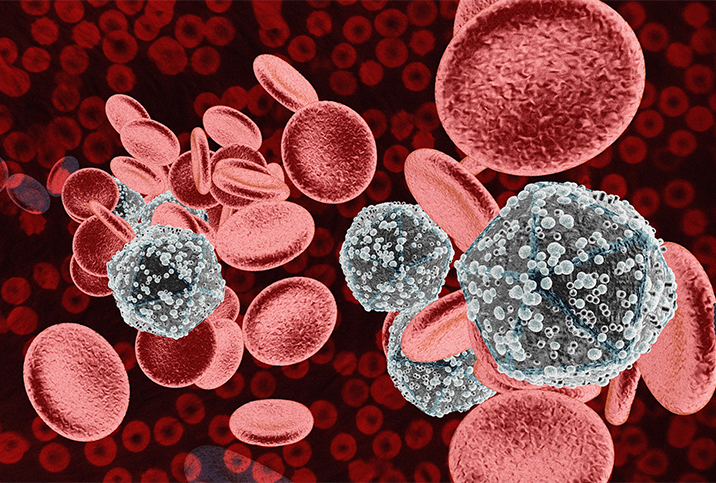HIV/AIDS: Back to the Future

It's been about 42 years since the first diagnosis of HIV (human immunodeficiency virus) in the United States. Since then, nearly 700,000 people have died of HIV/AIDS-related illnesses and we continue to lose about 13,000 people each year.
Even though there are still about 30,000 new HIV cases each year in the U.S., it's now considered a rare condition, and the medical breakthroughs over the past decade have allowed people with HIV to prevent the progression of the virus to the third and final stage, AIDS (acquired immunodeficiency syndrome).
However, it was not always this way. Let's take a look at how we got here and where we might be going in the near future.
The history of HIV and AIDS
"HIV and AIDS have a complex and fascinating history," noted Dung Trinh, M.D., chief medical officer of Irvine Clinical Research in California, a physician with MemorialCare and founder of the Healthy Brain Clinic.
He listed five key historical landmarks for HIV/AIDS:
- HIV is believed to have originated in chimpanzees in Central Africa and was transmitted to humans through the consumption of bushmeat.
- The first cases of AIDS were recognized in the early 1980s, primarily among gay men in New York City and San Francisco. Deaths from AIDS gradually increased year by year, but it was not until September 1985 that President Ronald Reagan formally used the word "AIDS" in public.
- Initially, AIDS was thought to be a rare form of cancer, but it became clear it was caused by a virus that attacked the immune system.
- In 1983, French scientists discovered the virus causing AIDS and named it human immunodeficiency virus, or HIV.
- An epidemic quickly spread around the world, with millions of people becoming infected with HIV and eventually developing AIDS. According to the World Health Organization (WHO), since the beginning of the epidemic, more than 84 million people have been infected with HIV and more than 40 million people have died of HIV/AIDS-related illnesses.
"In the early years of the epidemic, there was widespread fear and stigma surrounding people living with HIV/AIDS. Many governments were slow to respond to the crisis," Trinh explained.
It was not until the mid-1990s that scientists began to develop effective treatments for HIV/AIDS, significantly improving survival rates for people with the condition. There is still no cure for HIV/AIDS, but antiretroviral therapy (ART) can effectively suppress the virus and prevent its progression to AIDS.
Antonio Crespo, M.D., managing physician and infectious disease specialist for the Orlando Health Medical Group in Florida, said the reason people with HIV get ill—and, in some instances, die—is that the virus affects the immune system, thus, they are suddenly susceptible to infections that wouldn't typically affect a healthy immune system.
In 1987, azidothymidine (AZT) was the first drug approved by the U.S. Food and Drug Administration (FDA) to treat HIV/AIDS.
"When we identified how the virus worked, we could control and slow it down," Crespo said. "That really made a difference. Up until then, there was really nothing to do. Even though it was only one drug, it was the beginning of the path that led to more drug treatments. We realized a cocktail of drugs could control the replication of the virus. We used drugs that could prevent infection. That was an important milestone, especially as it decreased the mortality from these types of diseases."
As the development of HIV medication continued, the next big milestone occurred in 1995, when protease inhibitors were approved by the FDA. Crespo said this was the start of treating HIV like a chronic disease, though some of the treatments had a lot of side effects and there was a combination of pills.
"That really changed the way we looked at HIV," Crespo said. "Over time, we have tried to make treatment options easier for patients, with minimal or no side effects that will allow them to have a normal life."
Today, more than 38 million people worldwide live with HIV/AIDS, Trinh noted.
"While significant progress has been made in reducing new infections and improving treatment outcomes, much work remains to be done to end this global epidemic," he added.
HIV, AIDS and stigma
Emily Rymland, D.N.P., F.N.P.-C., a certified HIV specialist in Northern California who works for telemedicine company Nurx, noted there is still little understanding or common knowledge about HIV.
"The reason is that no one talks and no one educates," Rymland said. "Stigma keeps people silent and silence perpetuates STIs and HIV."
She added that people often think only others will get infected, showing the mentality of: "That can't happen to me. I am not gay or promiscuous."
Common myths and misinformation that support the stigma surrounding HIV include:
- HIV is a problem only for the gay population
- HIV happens only to promiscuous people
- If I don't have symptoms, then I can't have HIV
- You can get HIV from a public toilet
- You can't get HIV from oral sex
None of the above statements are true. But you can find them online promoted as truth.
Rymland and Trinh agreed there are two key reasons driving the stigma around HIV/AIDs. When HIV/AIDS was first highlighted to the American people, it was initially associated with marginalized groups such as gay men, injection drug users and sex workers.
"This led to fear and discrimination toward these groups, which in turn contributed to a general societal stigma around HIV/AIDS," Trinh explained.
Rymland added that some people still believe HIV is a gay disease, which prevents people who are not gay from understanding they're also at risk.
"I have treated many HIV-positive straight men and women over the past 25 years who had no idea they were at risk," she explained. "We need to get the message out that anybody who is sexually active and isn't 100 percent sure of their partner's status should be getting tested regularly and also consider taking pre-exposure prophylaxis [PrEP]."
She advised PrEP is a safe and effective medication for preventing HIV. However, it's still not well-known outside the gay community. Thankfully, the Affordable Care Act now requires many insurance plans to cover PrEP at no cost to the patient. Check with your individual plan to see if you have this coverage.
"Anybody who thinks they may be at risk of HIV should consider it," Rymland added.
The second reason for ongoing stigma is that HIV/AIDS is predominantly viewed as a sexually transmitted infection/disease. While it is, this fact shouldn't be a reason to ignore or pretend that it doesn't exist and can't affect you.
"People link feelings of shame or embarrassment to those living with it," Trinh explained, adding that misinformation about how the virus is spread contributes to fear and discrimination toward people living with HIV/AIDS.
Over time, though, he noted there has been progress in reducing the stigma surrounding HIV/AIDS. Education campaigns have helped to dispel myths and misconceptions about the condition, and advocacy efforts by people living with HIV/AIDS have helped to raise awareness of the need for compassion and support.
In recent years, advancements in treatment and prevention have also played a role in reducing stigma.
"Effective ART has allowed many people living with HIV/AIDS to live long and healthy lives, while [PrEP] has greatly reduced the risk of infection among those at high risk," Trinh said.
Crespo noted a generational gap, as the views of older people who grew up during the worst of the epidemic—in the 1980s and 1990s—differ from those of young people.
"Even though we have made significant progress to get rid of the stigma, we still have work to do," he added.
The future of HIV and AIDS treatment
Trinh noted the future of treatment for HIV and AIDS looks extremely promising, with ongoing research and development improving outcomes for people living with the condition.
Here are some potential areas of advancement:
- Cure research. While there is currently no cure for HIV/AIDS, researchers are exploring different approaches to achieve a cure or long-term remission. These include strategies like "shock and kill" (activating the latent virus and then eliminating it) and "block and lock" (preventing the latent virus from reactivating).
- Gene editing. Scientists are exploring the use of gene-editing techniques such as CRISPR (clustered regularly interspaced short palindromic repeats) to target and eliminate HIV from infected cells. While this approach is still in the early stages, it has shown promise in laboratory studies.
- Immunotherapies. Researchers are studying ways to harness the immune system to fight HIV/AIDS, including using antibodies to neutralize the virus and vaccines to prevent infection.
- Long-acting therapies. Researchers are working on developing long-acting treatments that would eliminate the need for daily medication. This could improve adherence to therapy and reduce the risk of drug resistance.
"It's important to note that these advancements will take time to develop, test and implement," Trinh explained. "In the meantime, current treatments like ART remain highly effective at suppressing the virus and preventing progression to AIDS."
He added that we must also continue prevention efforts through measures such as condom use, PrEP and education campaigns.
The other part of advancing treatment is continued work toward developing a cure for HIV, Crespo noted. So far, a cure remains elusive, but scientists are looking at new drugs and new research.
"Hopefully, at some point, especially for younger HIV patients, there will be a cure in their lifetime," he said.
The bottom line
Rymland emphasized that educators and healthcare professionals need to talk openly about HIV/AIDS with patients and others. Teachers and pediatricians, in particular, are in a position to present the message about awareness and protection to people when they're young. Creating youth-friendly, science-based social media can be very helpful for the future of HIV/AIDS.
As well as keeping people alive and healthy, the medications for treating and preventing HIV enable HIV-positive people to enjoy worry-free sex lives, she added.
"Someone with HIV can absolutely continue to have a happy, fulfilling life, including a thriving sex life. HIV is not only no longer a death sentence, but it is now a completely manageable chronic condition," Rymland explained.
Editor's note: This report is part 5 of a five-piece introduction and continuing update focusing on HIV/AIDS. Check out the other parts of this series:


















